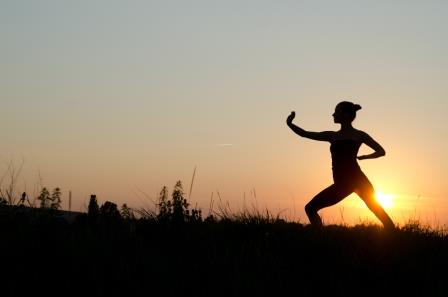Psychic Blog
Martial Arts
28 Sep 2016

If you like physical activity, but would like to try something that brings more harmony to your mind, body and spirit then some form of martial arts may be just the thing.
There are many different types of martial arts, but each require a focus on breath, a non-distracted mind, self-discipline, concentration and a calm outlook. Your teacher will focus on inner strength, self-awareness, control as well as the physicality required for the moves.
Most styles today are based around non-aggressive Buddhist beliefs, and many will practise the art as a form of self-defence. Whatever your age, you can try some form of martial arts and benefit from increased balance, an extra feeling of confidence in life and be more poised in everyday situations.
The Styles:
Aikido – this is the gentlest of martial arts; ‘Aikido’ actually means – ‘Way of harmony’; it uses flowing circular movements for the exercises.
Jujitsu – this type of unarmed self-defence was once used by Samurai warriors; it is a traditional Japanese martial art and has developed in to what we now know as Judo.
Judo – this style of martial arts turns the attackers force to your advantage! Since the 1960’s it has been part of the Olympics, but it actually started in Japan in the late 1800s.
Karate – this form targets certain areas of the body – face & head, chest, stomach and back. It uses blows, as opposed to throws.
Kendo – this is exciting to watch – it has fast paced exciting footwork, and the opponents use fencing with bamboo staves and sometimes even real swords…
Kung Fu – Kung Fu means ‘well done’ in Chinese; this style is a type of boxing. They use handsprings, leaps, turns, falls and dodges to get the upper hand.
Tae-Kwon-Do – this is a Korean style of martial arts, and is one of the more aggressive forms – full of flying kicks and punches.
Tai Chi – is another more gentle form of martial arts that has been around for more than 2000 years. The movements are practised slowly and deliberately, and although they are learned one movement at a time, eventually a person can flow from one position to the next easily and gracefully. The whole practise is based in ‘yin’ and ‘yang’ – the concept is to bring your spirit, mind and body back into harmony.
Ref: Encyclopaedia of Mind Body Spirt & Earth
TweetBrowse Our Blog
Categories
- Blog Home
- Angels
- Astrology
- Book Reviews
- Celebrity
- Crystals
- General
- Love
- Mediumship
- Paranormal
- Readers
- Seasons
- Special-Offer
- Spirituality
- Superstitions
- The Psychic Gift
- Wellbeing